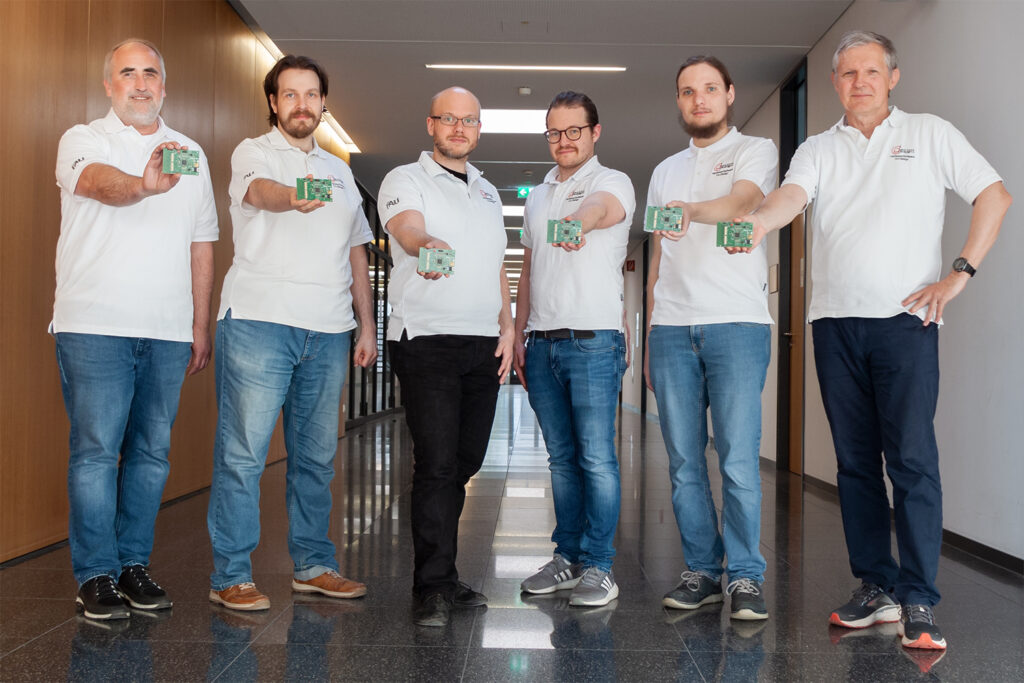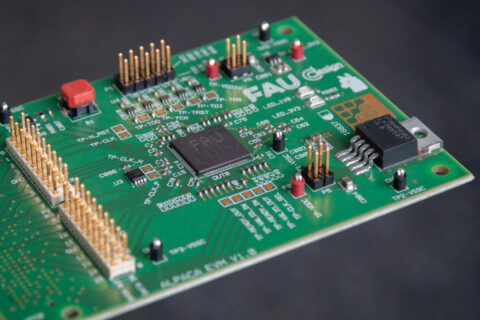Hardware/Software Co-Design Team designs Supercomputer-on-a-Chip
A team of the Hardware/Software Co-Design Chair designed a chip that integrates 64 custom processor cores.
The chip, called ALPACA, unleashes an enormous computing power of up to 384 billion arithmetic operations per second while drawing less than 3 watts.
ALPACA’s application domains are manifold. The chip is suitable for the fast processing of digital signals (audio, video) as well as large amounts of data, such as those present in machine learning and scientific computing. Thanks to its low power demands, applications in the fields of medical technology, IoT systems, and automotive benefit in particular.
ALPACA was developed within the Collaborative Research Centre/Transregio 89 “Invasive Computing,” funded by the German Research Foundation (DFG). The area of the chip is just 10 mm2, manufactured in 22 nm semiconductor technology. However, a chip is only as powerful as its corresponding compilation and programming tools. Therefore, in a unique hardware/software co-design, a powerful compiler for parallelization and automatic mapping of loop programs has been developed parallel to the chip design.

